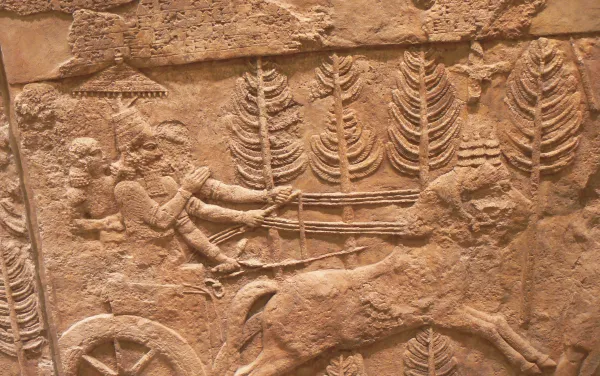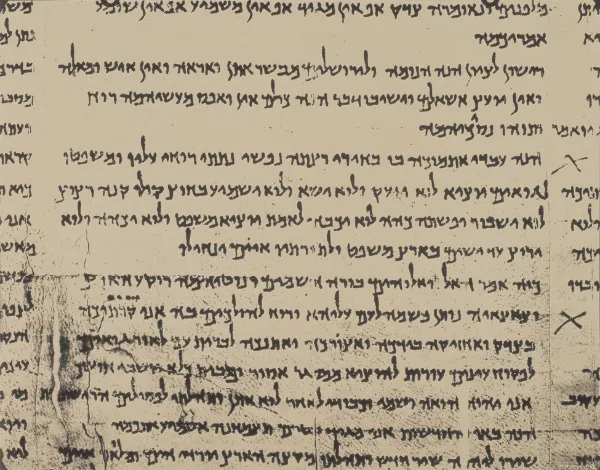by David W. Baker
Introduction
Isaiah’s magnificent prophecy spans not only history, going from creation (e.g., 42:5) to eternity (e.g., 9:7), but also geography, with an interest ranging between God’s own people through all of humanity (e.g., 2:2). Containing both words of hope and horror, its key theme is God himself, who is referred to hundreds of times.
Isaiah prophesies during the latter half of the eighth century B.C. during the reign of four named kings (1:1). His prophecies do not simply concern his own era, however, but anticipate both horrifying and hopeful events in Judah’s future. They describe a period of destruction and exile, with many of the people being deported far away from their own land, which will be ravaged and destroyed (586 B.C.). Some of Isaiah addresses the situation of exile (chs. 40–55). This is not the end, however, since the exiles will return and the land will be rebuilt (c. 535 B.C.); other sections of the book seem directed toward that situation (chs. 56–66).
The compositional history of Isaiah is debated, with numerous competing views as to the number of authors and the times of composition.2 This discussion is beyond the scope of the present study, but whichever view is espoused, the historical scope of the prophecy covers a period of over two centuries. Here we summarize the sweep of history between the eighth and fifth centuries B.C.
In the beginning of this period, Israel was controlled by Assyria, a major world power whose capital, Nineveh (Mosul in contemporary Iraq), is on the Tigris River, but whose empire in this period stretched from what is now Iran as far west as Egypt. Lying in the midst of major land routes between Assyria and Egypt, Israel felt repeatedly the horrors of war and destruction.
Just prior to the time of Isaiah, a succession of three Assyrian kings arose who were weaker and less aggressive than their predecessors, so Israel and Judah enjoyed relative peace and prosperity. This came to an abrupt end in 745 B.C. when a new and powerful king gained the Assyrian throne. Tiglath-pileser III (744–727 B.C.; 2 Kings 15:29; cf. 15:19, where he is called Pul) reinvigorated Assyrian expansion and aggression until the end of the Assyrian empire late in the following century. The northern kingdom of Israel faced more imminent external pressure. Her king, Jeroboam II, had just died and his dynasty was brought to an end by the assassination of his son Zechariah (2 Kings 15:8–12), followed by a rapid turnover of rulers, likely influenced by the Assyrian pressure (v. 19).
| Judean Kings |
| Amaziah | 796–767 B.C. |
| Uzziah (Azariah) | (791)1–740/39 |
| Jotham | (750)–732/731 |
| Ahaz | (744/743)–716/715 |
| Hezekiah | 716/715–687/686 |
| Manasseh | (696/695)–642/641 |
| Amon | 642/641–640/639 |
| Josiah | 640/639–609 |
| Jehoahaz | 609 |
| Jehoiakim | 609–597 |
| Jehoiachin | 597 |
| Zedekiah | 597–586 |
Uzziah, the king of Judah, also died (740 B.C.; Isa. 6:1), but his passing, though traumatic, was expected since he was suffering from an incapacitating skin disease and his son Jotham was effectively ruling in his place (2 Kings 15:5). Jotham’s reign was not seriously affected by Assyria directly, but, ironically, by an alliance between Judah’s sister nation, Israel under Pekah, with their northern neighbor Aram, under Rezin (15:37). These two allies wanted Judah to join their coalition against Assyria, though their actual motives are unstated; they were too small to oppose Assyria on their own.3
Judah refused to do join the coalition, leading to the confrontation known as the Syro-Ephraimite War (Isa. 6–7; 2 Kings 16:5–9; 2 Chr. 28:5–21), which affected especially Ahaz, Jotham’s son. He dithered back and forth on whether to side with Assyria, who was strong and brutal, or Israel and Aram, who were stronger than Judah and also close by. He finally opted for a pro-Assyrian policy, against the urgings of Isaiah (Isa. 7:7–9), and bribed Tiglath-pileser to leave him alone and instead deal with the opposing alliance, which the Assyrian king did in 734–732 (2 Kings 16:7–9).4
When Tiglath-pileser died in 727 B.C., his subjects, including Hoshea, king of Israel, asserted their independence. His son and heir, Shalmaneser V (726–722 B.C.), besieged Samaria, the Israelite capital (2 Kings 17:4), and exiled its leaders under Sargon II (721–705 B.C.; vv. 5–6). In one of his annals he records: “I besieged and conquered Samaria, led away booty 27,290 inhabitants of it . . . and imposed on them the tribute of the former king.”5 In the period immediately after Sargon’s death, while his son Sennacherib (704–681 B.C.) was occupied securing the throne, several of his vassals rebelled, requesting help from Ahaz’s son and successor, Hezekiah (2 Kings 18:14–16; 715–687 B.C.).
Assyria proved too strong for any such alliance, moving against it in 701 B.C., conquering many and extracting tribute from them. Even so, Hezekiah did not join a coalition against them spearheaded by Philistia in 715–7...




